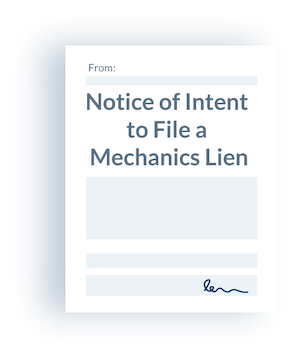We have a secret about making demands for payment … the usual way is not always the effective way. Getting paid in the construction industry can be complicated and frustrating. We at The Construction Payment Blog believe in your right to get paid what you earn, but the best way to demand payment may not be exactly what you expect. It’s a good practice to drop demand letters for the notice of intent to lien, which typically is more effective.
For starters, we have a secret about making demands for payment … the usual way is not always the effective way. Take the general in-house, collections, or attorney drafted demand letter for example – also known as a Dunning Letter, this instrument is sometimes used when a project participant is facing payment woes.
But is the Demand Letter the most effective way to get paid in the construction industry? Here are 5 reasons why you might have better options.
1. The Demand Letter is Not Industry Specific:
Does your company have a policy about how to handle aging receivables? Typically you might send emails, make phone calls or write letters in order to try and collect payment, but if these polite reminders fail to prompt payment, you may attempt to ratchet up the correspondence a bit and send a demand letter. Unfortunately for companies in the construction industry, however, most demand letters are not industry specific. Industry specific collections tools matter, and help to get you paid. You need the right tool for the job.
2. Letters of Demand are Toothless:
Because a general demand letter is not industry specific, it doesn’t have the leverage that industry specific notices can provide. When addressing aging receivables, it’s important to be specific: Why aren’t your accounts being paid? It could be that your invoice isn’t a priority, or perhaps the debt is out of your customer’s hands (due to payment complications up the contracting chain). While a demand letter might establish that you are serious about collecting payment, it does little to address either of these problems. There is essentially no practical difference between a demand letter and any previous friendly emails requesting payment. Sterner sounding language provides no legal obligation for you to be paid. (Don’t make your demand letter toothless — read all about demand letters for contractors here!)
3. A Notice of Intent to Lien is More Effective:
Generally, sending preliminary notice is always a good idea, it helps to notify parties “up-the-chain” of your involvement on a project, it prioritizes your invoice over other non-noticing parties, and, in some cases, it may be a crime not to.
A Notice of Intent to Lien is effective in getting you paid because it leverages the availability of a mechanics lien to support the claim for payment.While a “Notice of Intent to Lien” is not required in most states, it is a notice designed specifically to address non-payment in the construction industry, and back up non-payment issues with serious teeth. Sending a Notice of Intent to Lien is effective in getting you paid because it leverages the availability of a mechanics lien to support the claim for payment. The industry specific security of a mechanics lien is the best way make sure you get paid on every project. In addition, the intent to lien involves everyone on a project. As well as notifying your non-paying customer, a notice of intent informs the owner, GC and lender of your intent to lien, and can prompt otherwise disinterested parties to sit-up and take notice, and pressure the non-paying party to pay up.
4. Research Shows…
Numbers don’t lie. Based on a recent survey, nearly half of all notices of intent sent secured payment within 20 days of delivery. Considering how easily (and cheaply!) these notices can be sent, they have truly become a no-brainer in securing payment. In fact, we’ve coined the notice of intent to lien as “the secret weapon to getting paid in the construction industry.”
5. The Best Payment Funnel:
The step-by-step process of managing A/R and collecting your accounts is often referred to as a payment funnel. Consider your current payment funnel: Do your methods include a general demand letter? How are you collection times? Is your policy efficient? Would you like to improve? Consider integrating a notice of intent to lien into your policy and watch your payment provisions increase. If you create the best payment funnel possible, you can secure the payment your company has earned.




